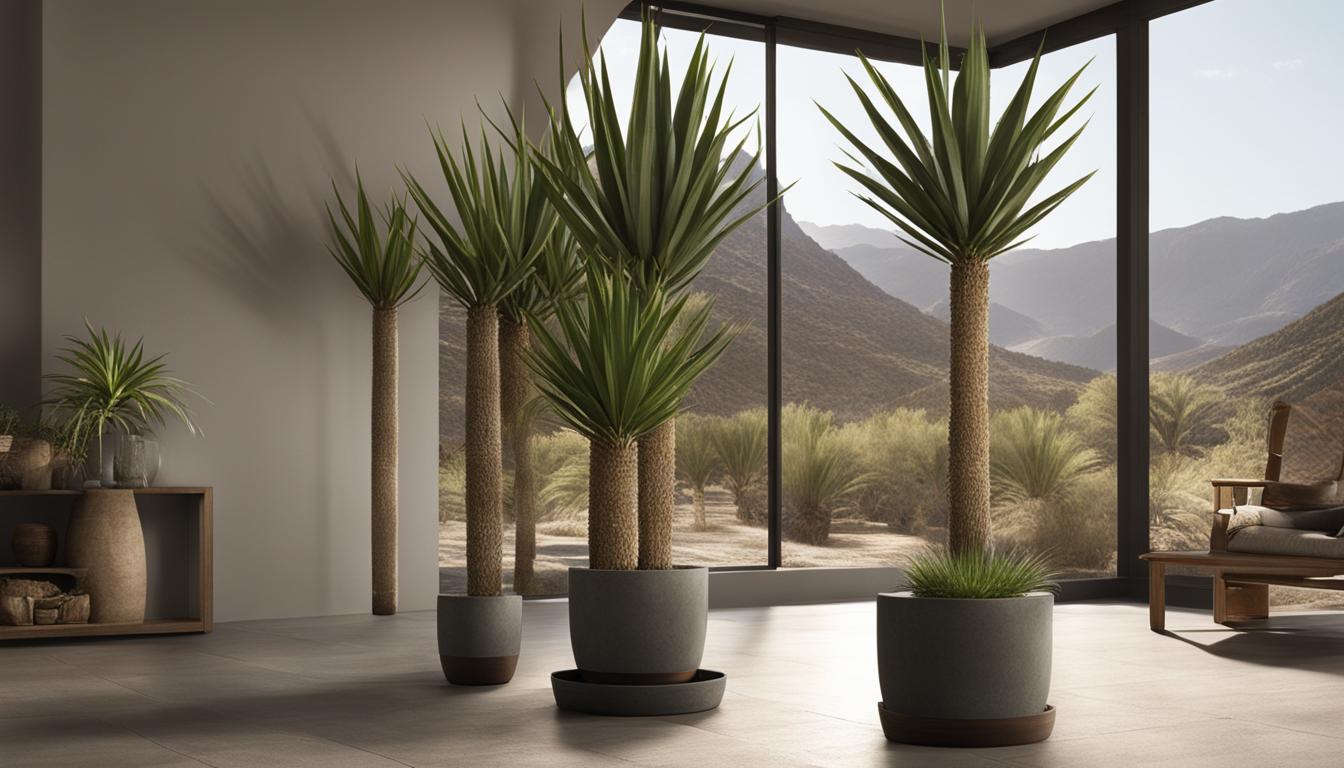
Growing yucca plants, particularly Yucca elephantipes, can be a rewarding experience for indoor and outdoor gardeners alike.
These visually captivating plants, resembling agave or dragon plants, are native to the American Southwest, Mexico, and the Caribbean. But before we dive into the details, let me clarify that yucca plants should not be confused with yuca or cassava plants, which are used for culinary purposes.
Yucca plants are incredibly resilient, capable of growing up to two feet per year, and they are known for their exceptional drought tolerance. This makes them suitable for both indoor and outdoor cultivation.
As houseplants, yuccas can grace our homes without overpowering the available space for many years. Outdoors, certain varieties can even survive subzero temperatures, but it’s crucial to plant them away from structures to prevent any potential damage.
When handling yucca plants, it’s important to exercise caution, as their leaves bear sharp and pointy tips that can cause injury. Additionally, it’s worth noting that all parts of the plant are toxic to dogs, cats, and horses. Keeping our furry friends away from yuccas is essential for their safety.
Now that we’ve covered the basics, let’s move on to the essential care instructions for yucca plants.
Yucca Plant Care
Proper care is essential for the health and longevity of yucca plants. Whether you have a yucca plant indoors or outdoors, following the right care practices will ensure its success. Here are some important tips on yucca plant care:
Light and Location
Yucca plants thrive in bright, indirect light, making them perfect for well-lit indoor spaces. However, they can also tolerate a few hours of shade each day if grown outdoors. When positioning your yucca plant indoors, place it near a window that receives ample sunlight. Outdoor yuccas should be planted in areas with partial shade to protect them from extreme heat or direct sunlight.
Soil and Watering
Yuccas prefer sandy, well-draining soil with a neutral to acidic pH level. This type of soil composition helps prevent waterlogging and root rot. When it comes to watering, it’s important to let the soil dry out between waterings to avoid overwatering. Yucca plants are highly sensitive to excess moisture, so a thorough watering every 10-14 days is usually sufficient. Remember to adjust the watering frequency based on environmental factors such as temperature and humidity.
Fertilizer and Pruning
Yucca plants can benefit from regular fertilization during the growing season. You can use a liquid or controlled-release fertilizer, applying it once a month to promote healthy growth. Pruning is generally not necessary for yuccas, but if your indoor yucca plant becomes too tall, you can trim the top portion in early spring. This will help maintain its manageable size and prevent it from overpowering your indoor space.
Propagation
If you want to expand your yucca plant collection, you can propagate yuccas through various methods. One common method is through stem cuttings, where you remove a healthy stem from the main plant and root it in a pot with well-draining soil. Division is another option, where you separate the plant into smaller sections and replant them individually. Lastly, yuccas can also be grown from seeds, although this method requires patience as it takes longer for them to establish.
By providing the right care, you can enjoy the beauty and resilience of yucca plants both indoors and outdoors. Remember to consider their light and location needs, choose the appropriate soil and watering routine, fertilize them regularly, and explore propagation options if you want to expand your collection. With these care tips in mind, your yucca plants will thrive and add a touch of natural elegance to any space.
| Care Aspect | Details |
|---|---|
| Light | Full sun; bright, indirect light indoors. |
| Water | Allow soil to dry between waterings; reduce in winter. |
| Soil | Well-draining; sandy soils are ideal. |
| Temperature | Prefers 60-80°F (15-27°C); avoid cold drafts. |
| Fertilization | Feed with a balanced, water-soluble fertilizer every few weeks during the growing season. |
| Pruning | Remove dead leaves; prune sparingly to shape or control size. |
| Repotting | Every other year or when the plant becomes root-bound. |
| Humidity | Average home humidity is sufficient; does not require extra humidity. |
| Propagation | By offsets or stem cuttings. |
| Special Properties | Yucca plants can be used for their fibers and are known for their fire-starting ability. |
| Toxicity | Yucca plants can be toxic to pets if ingested, causing vomiting and diarrhea. |
It’s important to know that while Yucca plants have edible parts, they are different from the yuca (cassava) which is a commonly eaten root vegetable. The Yucca genus includes ornamental plants that are often used in landscaping and have various uses in traditional crafts and food in some cultures. Always handle with care and consult a professional for pet-safe gardening.
Types of Yucca Plant
When it comes to yucca plants, there is a wide variety of species to choose from, each with its own unique characteristics. Let me introduce you to some of the popular types of yucca plants:
1. Yucca gigantea (Spineless Yucca or Yucca Cane): This slow-growing plant, also known as Y. guatemalensis and Y. elephantipes, features long, sword-like leaves. It is a great choice for indoor spaces due to its elegant appearance and adaptability.
2. Yucca aloifolia (Spanish Bayonet): Characterized by stiff leaves with sharp points, this yucca variety is not recommended for homes with small children. Its unique appearance adds a touch of drama to outdoor landscapes.
3. Yucca baccata (Banana Yucca), Yucca brevifolia (Joshua Tree), and Yucca filamentosa (Adam’s Needle): These yucca plants are commonly found in desert areas. Yucca baccata produces sweet seedpods, Yucca brevifolia is known for its slow growth and iconic appearance, and Yucca filamentosa is a broadleaf evergreen shrub with attractive foliage.
Each yucca variety has its own hardiness zone range and specific growth requirements. Whether you’re looking for an indoor or outdoor yucca plant, there’s a species that suits your needs and preferences.
FAQ
Are yucca plants toxic to pets?
Yes, all parts of the yucca plant are toxic to dogs, cats, and horses.
How fast do yucca plants grow?
Yucca plants can grow up to two feet per year.
Can yucca plants be grown indoors?
Yes, most yucca species can be grown as houseplants.
Can yucca plants survive in cold temperatures?
Yes, some yucca varieties can survive subzero temperatures.
Do yucca plants require a lot of maintenance?
No, yucca plants are low-maintenance and adaptable.
What kind of soil do yucca plants prefer?
Yucca plants prefer sandy, well-draining soil with a neutral to acidic pH level.
How often should yucca plants be watered?
Yucca plants should be watered when the soil has dried out between waterings.
Can yucca plants be pruned?
Pruning yucca plants is usually not necessary, but they can be pruned in early spring if they become too tall for indoor spaces.
Can yucca plants be propagated?
Yes, yucca plants can be propagated through cuttings, division, or seed.
What are some popular varieties of yucca plants?
Some popular varieties include Yucca gigantea (spineless yucca), Yucca aloifolia (Spanish bayonet), Yucca baccata (banana yucca), Yucca brevifolia (Joshua tree), and Yucca filamentosa (Adam’s needle).


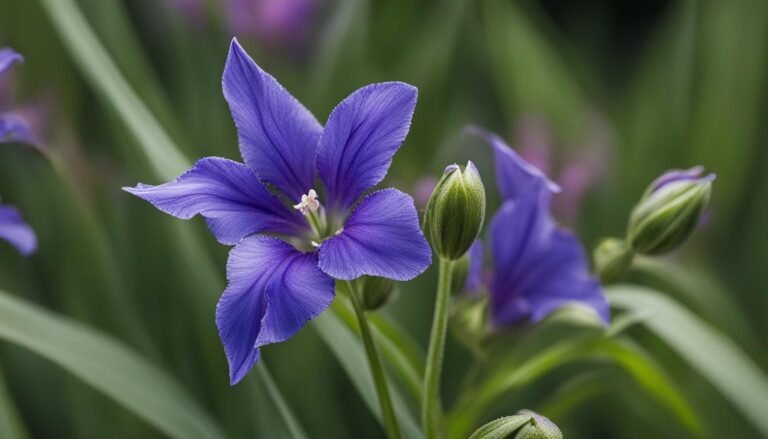

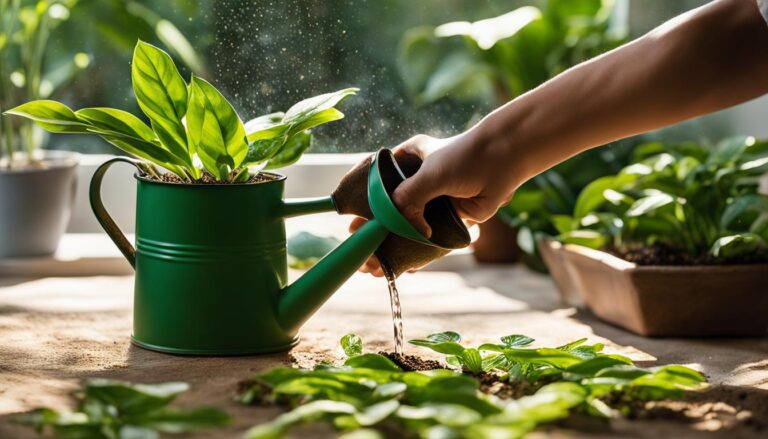
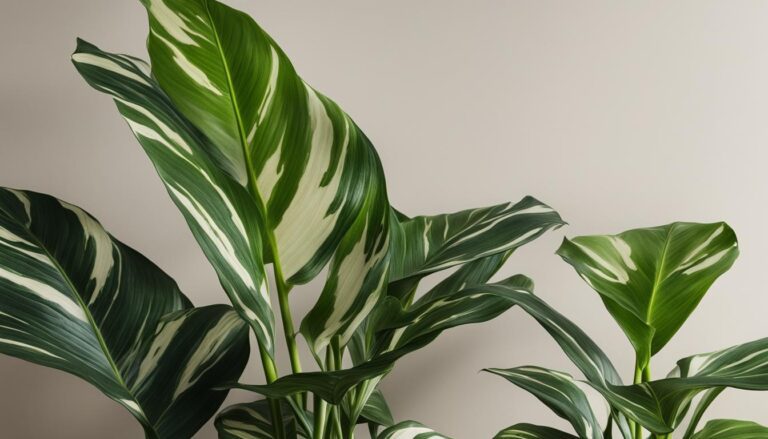
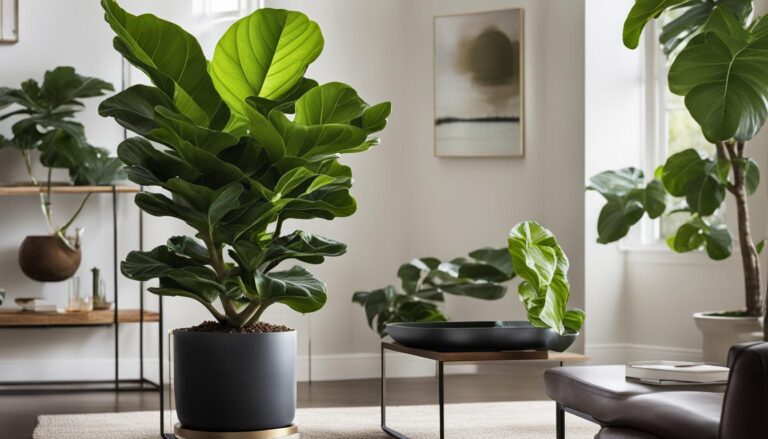
One Comment
Comments are closed.